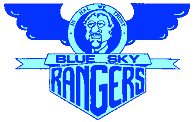Masters of the Universe®: The Power of He-Man®
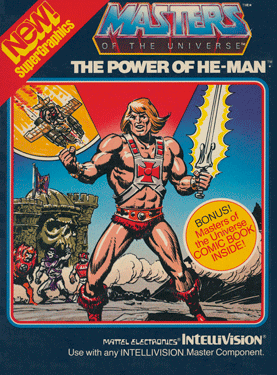
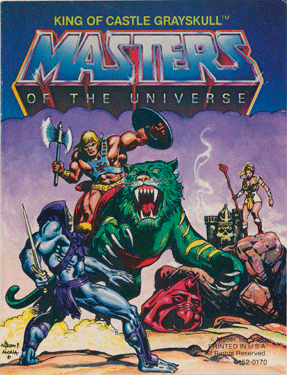
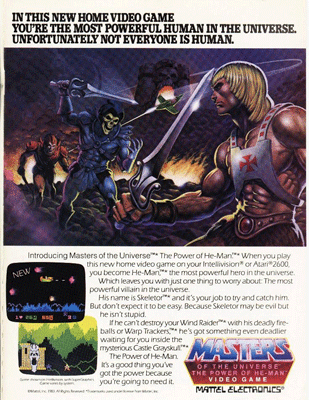
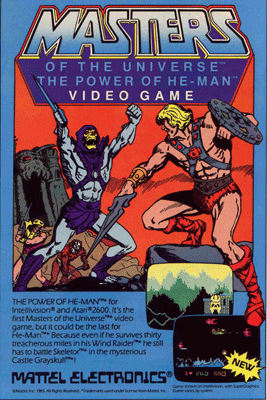

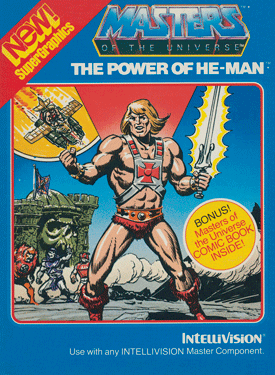
INTELLIVISION CARTRIDGE [Mattel Electronics #4689]
Release 1983
Characters used under license from Mattel Toys
Program: Rick Koenig, Ray Kaestner
Graphics: Connie Goldman
Music/Sound effects: Joshua Jeffe


DEVELOPMENT HISTORY
Masters of the Universe -- a series of action figures tied in to an afternoon animated series -- was a smash hit for Mattel Toys, its biggest success in years. Getting Intellivision and Atari 2600 video games out for Christmas 1983 was a priority.
Wanting to avoid what happened with Kool-Aid Man, Marketing decreed that the two versions should be the same. A two-phase game was agreed on -- flying the Wind Raider to Castle Grayskull; battling Skeletor inside the castle -- with different programmers doing each phase to speed production. In February 1983, work started on the Intellivision version.
Rick Koenig (Motocross) was chosen to do the Wind Raider phase and Vladimir Hrycenko was pulled off the lower-priority Convoy to do the Castle Grayskull phase.
By the end of April, it became apparent that the Castle Grayskull section wasn't coming together. Vladimir was replaced with Ray Kaestner (BurgerTime), who was at the time experimenting with ideas for a proposed Intellivision III version of Night Stalker. Ray scrapped all of Vladimir's existing code and started from scratch with the deadline only four weeks away. Using some fancy graphics-handling routines that he had developed for the Intellivision III, Ray met the deadline.
When the game came out (on schedule) it did well, so Rick and Ray were put to work on Masters of the Universe II. It was unfinished when Mattel Electronics was closed in January 1984; Ray's part of the game eventually became the INTV Corporation release Diner, a sequel to BurgerTime.
A Colecovision version of Masters of the Universe: The Power of He-Man was completed but was unreleased when Mattel Electronics closed.


